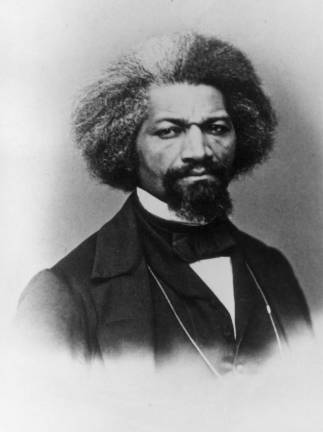Orange County pays tribute to Black History Month
Goshen. Orange County’s history is rich with contributions from Black residents dating back to the 1600s, including connections to the Underground Railroad, a march lead by Frederick Douglass up Washington Street and down Broadway in 1870 and the election of the first Black woman mayor of any city in New York State.


Orange County Executive Steven M. Neuhaus is proud to recognize Black History Month, which runs through the month of February.
“Black History Month provides a wonderful opportunity for us to learn more about the many contributions that Black Americans have made to Orange County’s rich history,” Neuhaus said. “Since the inception of our nation, African Americans have been at the forefront of cultural, business, and educational progress. I am proud to recognize Black History Month, an initiative which continues to move our country forward.”
According to Orange County historian Johanna Porr-Yaun, Black Americans have had positive impacts on the history of Orange County dating back to the 1600s.
In about 1620, Jan Rodriguez, an interpreter for the Dutch West India Company in New Amsterdam (now New York City), began working in Orange and the surrounding counties.
Orange County also played an integral role in the Underground Railroad, the route used by slaves to escape to freedom in Canada in the mid-1800s. Safe houses that sheltered escaping slaves have been chronicled in Goshen and in Newburgh.
Frederick Douglass in Newburgh
Approximately 178,000 soldiers of African American descent served in the Civil War on the Union side. Several hundred were from Orange County and received pensions after the war, using these funds to buy small homes and farms here.
In 1870, celebrated civil rights activist Frederick Douglass visited Newburgh, toured Washington’s Headquarters, and spoke at the Opera House to urge black men to exercise their newly won franchise rights. Douglass led a Jubilee march up Washington Steet and down Broadway in 1870 to celebrate the passing of the 15th Amendment/Voting Rights Act.
The classic autobiography detailing the abuse of young black women bound in slavery, “Incidents in The Life of a Slave Girl,” was written in Cornwall by Harriet Jacobs who escaped from Maryland and made a new life in Orange County.
Newburgh is the birthplace of James Varick, who founded the AME Zion Church in 1821 and was its first bishop. Orange County also played a role in the early stages of the country’s civil rights movement.
The NAACP was founded in 1909 and that same year a chapter was formed in Middletown.
Service to community and country
Some prominent African Americans that made an impact in Orange County include:
· Frederica Warner, a prominent community activist, founded Meals on Wheels of Greater Newburgh in 1972. Warner died in 2019 at the age of 101.
· Harvey Burger of Newburgh became the first African American elected to the Orange County Legislature, according to Town of Warwick historian Dr. Richard Hull.
· In 1991, Hull noted, Audrey Carey became Newburgh’s first Black Mayor and the first Black woman mayor of any city in New York State.
· Artist Horace Pippin, who lived in Goshen, had his artwork featured in the Metropolitan Museum of Art in New York City. Pippin grew up drawing pictures of scenes from Goshen’s Historic Track. He died in 1946 at age 58.
· In World War I, Corporal George Washington Jackson of Goshen was a key member of a regiment that was awarded the prestigious French Croix de Guerre for distinguished service.
· Corp. Elmer Earl of Goshen served in Company K of the 369th Infantry Regiment during World War I and received Distinguished Service Crosses for his heroic actions at the Argonne Offensive in France.
For more information, contact Justin Rodriguez, Assistant to the County Executive for Communications and Media Relations at 845 291-3255 or jrodriguez@orangecountygov.com.